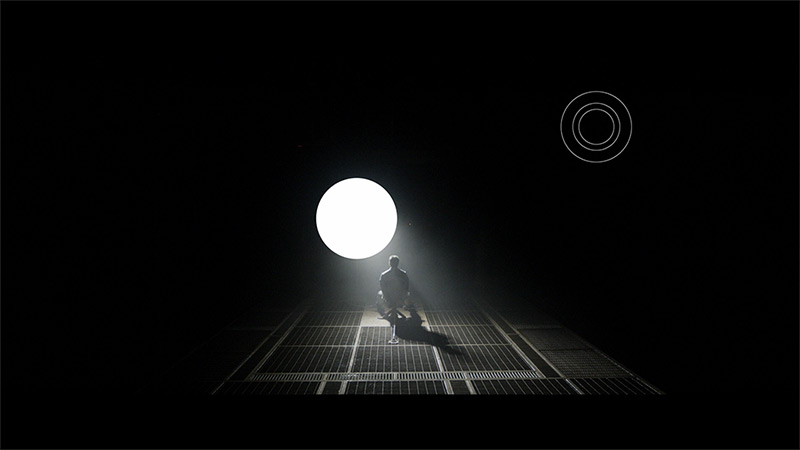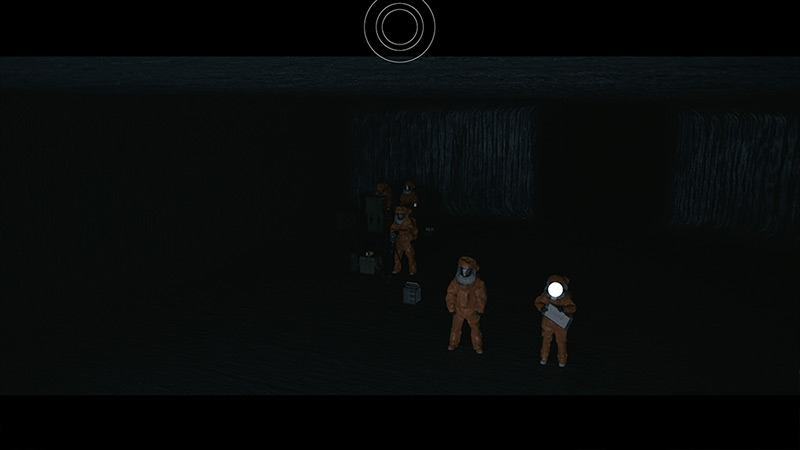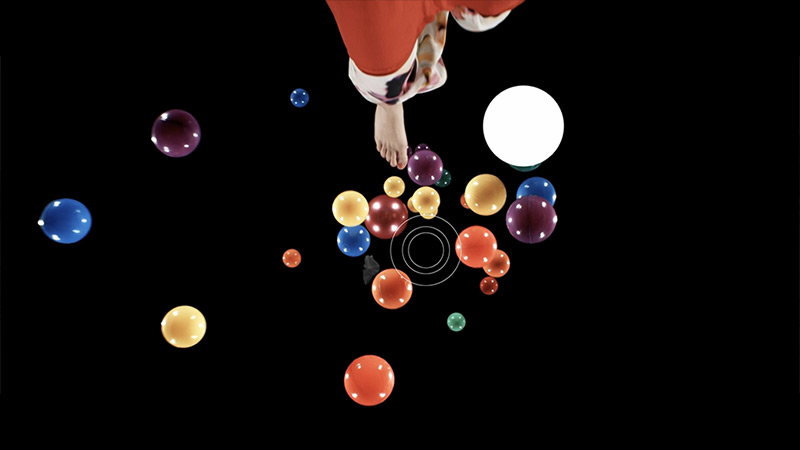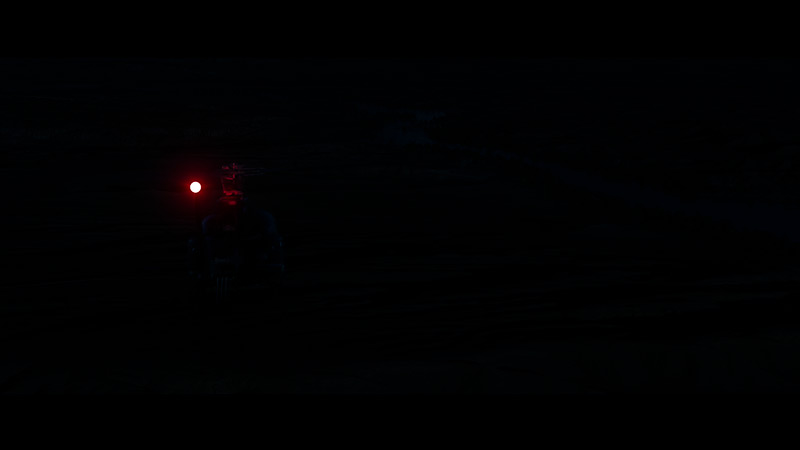LG C4 is a television that will likely have no competition in its price range for many users. Thanks to the wide options for purchase, it will appeal to those looking for a TV strictly for movies and series, as well as for gaming. The advanced WebOS system and a remote that works like a mouse will certainly make everyday use much easier and ensure that we will likely stick with this brand for a much longer time. The OLED panel implemented by the manufacturer, resulting from over 10 years of history, shows that it has not yet said its last word. Brightness results in HDR material are very solid and can display an incredibly dynamic and deep image. Here, it’s worth mentioning the excellently implemented dynamic tone mapping feature, which makes HDR10 images look almost as good as Dolby Vision. And if we’re talking about fidelity to artistic vision, we can't forget about how calibratable LG TVs are, allowing for a great deal of freedom for the calibrator and classic calibration for home users, as well as 3D LUT for professionals. However, if we are looking for a gaming TV, then the LG C4, like most of the manufacturer’s OLED TVs, will be the ideal choice. With the implementation of HDMI 2.1 ports and the full use of their potential, we can enjoy extremely smooth gameplay with all the benefits, such as VRR, ALLM, FreeSync, or G-Sync. Of course, the panel, which has a maximum refresh rate of 144 Hz and an advanced smoothing technology, will also allow for very smooth and sharp images during broadcasts of various sporting events. It’s hard not to give a high rating to LG OLED C4, as it's difficult to find a TV in a similar price range with such advanced features among the competition.
- Matching (Score)
- Our verdict
- TV appearance
- Where to buy
- Contrast and black detail
- HDR effect quality
- Factory color reproduction
- Color reproduction after calibration
- Smoothness of tonal transitions
- Image scaling and smoothness of tonal transitions
- Blur and motion smoothness
- Console compatibility and gaming features
- Input lag
- Compatibility with PC
- Viewing angles
- TV efficiency during daytime
- Details about the matrix
- TV features
- Playing files from USB
- Apps
- Sound
LG OLED C4 vs Samsung S90D / S94D 48" (WRGB OLED)
Direct compare
C45 / C41
S90D / S94D
Available screen sizes: 48”


Panel type: WRGB OLED
Resolution: 3840x2160
System: WebOS
Model year: 2024
Complete the survey to find out the result

Panel type: WRGB OLED
Resolution: 3840x2160
System: Tizen
Model year: 2024
Complete the survey to find out the result

Overall rating
8.3
7.9
Movies and series in UHD quality
8.2
7.9
Classic TV, YouTube
8.8
8.6
Sports broadcasts (TV and apps)
8.6
8.4
Gaming on console
9.3
9.4
TV as a computer monitor
8.6
8.6
Watching in bright light
5.7
5.4
Utility functions
9.5
7.7
Apps
9.7
9.3
Sound quality
7.5
6.8
Complete the survey to find out what fits your preferences
Advantages
High efficiency in HDR materials
Very good colour reproduction after calibration
Faithfulness of image with directorial vision
Excellent collaboration with consoles and PCs - low input lag, multitude of conveniences
Advanced motion smoothing system
Perfect black
Great for 4K HDR content
Excellent for gamers - 144hz, HDMI 2.1, low input lag.
Advanced and smooth Tizen system
Multifunctional solar remote
Disadvantages
Sometimes visible tonal transitions
Worse brightness than larger counterparts
Missing Dolby Vision and DTS:X
Our verdict
Samsung OLED 48 S90D or S94D is the smallest model in this series and we had the opportunity to check out what it can do. At first glance, it’s clear that it handles details in dark scenes excellently, as expected from an OLED. It’s worth mentioning that the 48-inch version differs from the larger models. The brightness is slightly lower, and the panel has a satin finish instead of a glossy one. During the day, this may affect image perception. However, regardless of the variant, OLED always makes an impression. The black depth is incredible and the contrast makes even the most demanding scenes look cinematic. When it comes to high-quality materials, this TV literally shines – bright elements in dark frames literally jump off the screen. The factory colour settings could be better, but after calibration, the TV reveals its full potential. While watching from different spots in the room, we noticed that the wide viewing angles work well – the image remains sharp and full of details, even when viewed from the side. The Tizen system proved to be user-friendly – apps like Netflix and Prime Video were at our fingertips. A few less popular apps are missing, which could be a downside, but it wasn’t an issue for us. The interface itself operated smoothly, with no stutters. When watching sports and dynamic films, the TV showed what it’s capable of. The 144 Hz panel eliminates motion blur, and fast actions are displayed smoothly and without interruptions. What is gaming on this TV like? It’s simply pure enjoyment. Low input lag and support for 144 Hz made every gaming session responsive and fluid, whether we were playing dynamic FPS titles or more laid-back strategy games. Samsung OLED 48' S90D/S94D is a great choice for those looking for a smaller TV with excellent picture quality and extra features for gamers. It’s not without compromises, but in everyday use, it performs really well. For us, it’s a compact device that proves that size doesn’t always matter.
TV appearance











Where to buy
No links
No links
Contrast and black detail
10/10
10/10
Contrast:

Contrast between the black background and the bright spotlight illuminating Jack. Scene from the movie Oblivion (Universal Pictures).
Result
∞:1

Contrast between the glare on the chameleon's skin and the black near the edge of the screen below. Scene from the Spears&Munsil test disc.
Result
∞:1

Contrast between the reflection on the helmet and the black on the black film strip. Scene from the movie Arrival (Paramount Pictures).
Result
∞:1

Contrast between the actress's face and the black film strip at the top edge of the TV. Scene from the movie Gravity (Warner Bros. Pictures).
Result
∞:1

Contrast between the colorful balloon and the black slice between the falling objects. Scene from the Pioneer Kuro test disc (2008).
Result
∞:1

Contrast between the black background and the bright spotlight illuminating Jack. Scene from the movie Oblivion (Universal Pictures).
Result
∞:1

Contrast between the glare on the chameleon's skin and the black near the edge of the screen below. Scene from the Spears&Munsil test disc.
Result
∞:1

Contrast between the reflection on the helmet and the black on the black film strip. Scene from the movie Arrival (Paramount Pictures).
Result
∞:1

Contrast between the actress's face and the black film strip at the top edge of the TV. Scene from the movie Gravity (Warner Bros. Pictures).
Result
∞:1

Contrast between the colorful balloon and the black slice between the falling objects. Scene from the Pioneer Kuro test disc (2008).
Result
∞:1
Halo effect and black detail visibility:


LG OLED C4, as the name suggests, uses an organic panel of its own production. This series definitely belongs to one of the most recognisable on the market. Over 10 years of experience in building self-emissive panels has allowed for the refinement of each subsequent design, with the models from the 2024 range being the quintessence of this process. Of course, the use of this type of screen enables the achievement of flawless contrast and blacks, allowing viewers to immerse themselves in the world created by the director. This is possible thanks to the OLED panel, characterised by the absence of conventional backlighting, which instead allows current to pass through organic pixels. This permits super-accurate image control, thereby eliminating issues such as dimming of delicate fine details or the halo/blooming effect. Looking at both of our test scenes, we can notice two things: perfect light separation and a plethora of details in the movie "Sicario 2".
Samsung OLED 48 S90D stands out thanks to the use of an OLED panel, which provides an extremely high contrast, one of its key advantages. OLED technology allows each pixel to emit light independently, resulting in perfectly deep blacks and excellent visibility of details even in the darkest scenes. Unlike traditional LCD screens with backlighting, where black can appear washed out and greyish due to uneven backlighting, OLED ensures that pixels are completely turned off in areas where black should appear. This achieves an impressive level of contrast, making images more vibrant and realistic. An example can be seen in a scene from the film "Oblivion," where the S90D television superbly captures the intense light of the lamp, highlighting details in the bright areas of the image. Meanwhile, in "Sicario 2," the OLED panel accurately reproduces the helicopter lights against a dark background.
HDR effect quality
6.9/10
6.2/10
Luminance measurements in HDR:

The measured point is the setting sun against a bright sky. Scene from the movie Life of Pi (20th Century Fox).
Result
796 nit

The measured point is the moon against a dark, starry sky. Scene from the movie Life of Pi (20th Century Fox).
Result
772 nit

The measured point is the flashlight on the rifle, which shines directly at the camera. Scene from the movie Gemini Man (Paramount Pictures).
Result
869 nit

The measured point is the tail light of a helicopter flying at night. This is a very small light point, the essence of the HDR effect. Scene from the movie Sicario 2: Soldado (Lionsgate).
Result
837 nit

The measured point is the sun visible directly between the clouds. The scene is very bright and should blind the viewer as in nature. Scene from the movie The Meg (Warner Bros. Pictures).
Result
604 nit

The measured point is the setting sun against a bright sky. Scene from the movie Life of Pi (20th Century Fox).
Result
788 nit

The measured point is the moon against a dark, starry sky. Scene from the movie Life of Pi (20th Century Fox).
Result
807 nit

The measured point is the flashlight on the rifle, which shines directly at the camera. Scene from the movie Gemini Man (Paramount Pictures).
Result
851 nit

The measured point is the tail light of a helicopter flying at night. This is a very small light point, the essence of the HDR effect. Scene from the movie Sicario 2: Soldado (Lionsgate).
Result
838 nit

The measured point is the sun visible directly between the clouds. The scene is very bright and should blind the viewer as in nature. Scene from the movie The Meg (Warner Bros. Pictures).
Result
372 nit
Scene from the movie “Pan” (about 2800 nits)


Scene from the movie “Billy Lynn” (about 1100 nits)


Static HDR10


Dynamic: Dolby Vision
Dynamic: HDR10+


HDR luminance chart:
Samsung S90D / S94D 48" (WRGB OLED)
LG OLED C4
The results of HDR materials are definitely among the better ones. Practically every film significantly exceeds the 700 nits barrier, which allows for a very realistic image. Of course, none of them surpasses the magical thousand, however, the combination of such results along with unlimited contrast and black effectively boosts the visual outcome. The last of the scenes, featuring a fullscreen sun burst, is indeed less bright than the others, although it still represents a respectable level. It's also worth mentioning the excellent coverage of the DCI-P3 colour palette, which will enable the achievement of exceptionally vivid colours.
In the tested movie scenes, the Samsung OLED 48 S90D television achieves impressive brightness results, exceeding 800 nits in the first four shots, which can be considered a very good outcome. In the case of the last shot, where a full-screen burst of sunlight is visible, the brightness drops to around 400 nits but still remains at an acceptable level. However, it is worth noting that this model in larger sizes offers higher values, exceeding the "barrier" of 1000 nits. Additionally, speaking of the DCI-P3 colour space coverage value of 97% is an excellent result, which guarantees extremely rich and realistic colour reproduction, further enhancing the picture quality. However, once again it should be remembered that the panel in the 65' variant equipped with a QD-OLED panel will be even better in this aspect. For those hesitating about the size of the S90D model, it is worth noting that larger versions of this television offer a better HDR effect, and consequently, a higher score in our tests.
Factory color reproduction
8.1/10
7/10


Factory Mode
After calibration


Factory Mode
After calibration
The best factory mode implemented in the tested television was "Filmmaker". That was the one we used during all tests. This mode, in terms of colour reproduction, turned out to be quite decent, although other flaws effectively detracted from the enjoyment of the viewing experience. Starting with the most basic one, which is white balance, it was easy to notice that this was marked by a dominance of red, which completely altered the characteristics of the picture. We could see a strong yellowing of the whites and a shift of all colours to warmer tones. The gamma, which is a graph as equally important, if not more so, was quite severely reduced, resulting in a significant drop in contrast, except for the start of the graph, where the television insidiously lost details. That’s all regarding SDR materials. Looking closely at films with a wide dynamic range, we can observe exactly the same phenomenon of white balance yellowing as in films with a standard colour palette. The EOTF curve, which replaces the gamma chart for us, is practically perfect and cannot be faulted.
The S90D Samsung TV has been tested in Filmmaker mode, which offers good colour reproduction, although with some imperfections that may be noticeable to more demanding users. This mode may seem a bit too warm, and users who switched from Standard mode may experience a slight shock. It's worth considering that this state of affairs is caused by poor settings, such as white balance, rather than the Filmmaker mode itself. Both in SDR and HDR content, the device exhibits drops in blue, causing colours to appear warmer than they should. In practice, this means that some shades, like sky blue or skin tones, may seem less natural and take on a pinkish or yellowish tint. The Colour Checker test confirms these deviations, showing shifts towards warmer tones. In SDR content, the gamma chart indicates minor fluctuations, resulting in a slightly darker image, especially in the shadows. This may affect the clarity of details in darker scenes. Conversely, in 4K HDR materials, the EOTF curve is above the recommended line, leading to some portions of the image being too bright, which can cause clipping in the brightest areas. Overall, the Samsung S90D presents a solid image straight out of the box, but for the best results, particularly with more demanding content, additional calibration is recommended.
Color reproduction after calibration
9.5/10
8.7/10




As we mentioned earlier, LG televisions are equipped with advanced tools for carrying out the calibration process. We used them to model the picture in line with what the director envisioned. And without modesty, we must admit that we achieved this phenomenally. Both SDR and HDR materials present a level that clearly indicates this is how a film should look. It's worth taking a look at the colour errors on the "ColorChecker" palette, where practically none of them exceed "1", except for two samples.
After calibration, the Samsung OLED 48 S90D in movie mode looks even better than one might have assumed. The white balance, for both HD and 4K HDR content, has been improved to near perfection. Although minor errors can still be noticed, they are so minimal that they do not significantly affect the picture quality. Colours are more balanced, which translates into a natural reproduction of details, especially in scenes requiring a precise colour palette. It’s worth noting that this model in the 48' size is equipped with a WOLED panel that has different characteristics compared to larger sizes and has a smaller coverage of a wide colour gamut, not offering as rich colours as, for example, the 65-inch version, which is equipped with a QD-OLED panel.
Contrast has also seen significant improvement. The gamma chart after calibration is much closer to the expected line, providing better balance between the bright and dark portions of the image. The EOTF curve, which showed issues with overexposed scenes before calibration, now shows better results. This effect allows for greater detail retention in bright parts of the image, particularly in HDR material.
Smoothness of tonal transitions
7.1/10
7.6/10












The fluidity of tonal transitions in LG televisions has always been a rather sensitive issue, as the manufacturer, despite impeccable performance in other areas, has almost always struggled to get this right. The evaluation results for the fluidity of tonal transitions in the tested television were quite good, with issues mainly visible in darker scenes, such as the last two scenes. Interestingly, this is a significantly better result than the highest model from the manufacturer, namely the LG G4.
The fluidity of tonal transitions on the Samsung OLED 48 S90D TV is at a good level, although subtle imperfections are visible in places. In most scenes, tonal transitions are smooth and well-reproduced, providing a natural viewing experience. In more demanding sequences, such as a dark coloured sky, slight issues may arise; however, they do not significantly impact the overall visual experience. In the test scene with dominant red hues, slight clipping of the brighter areas can be observed, but it is subtle enough not to interfere with viewing. Overall, the fluidity of tonal transitions on the S90D TV is solid, ensuring a good reception of content.
Image scaling and smoothness of tonal transitions
8/10
7.9/10
Smooth transition function


Image without overscan on the SD signal


Once again, we will take a look at the feature responsible for gentle gradation, but we will also address the one that aims to enhance the quality of lower-quality materials. The default smoothing of tonal transitions, as we could see, was not the worst, but it can be improved further. The function has a slider that allows us to adjust its intensity. We recommend using the former, as it produces very good results and does not blur important details.
Image scaling on LG C4 is quite good, however, it cannot be said to be without flaws. The image is slightly sharper by default, although not in a very noticeable way. While jagged edges of trees can be seen, it is not a major issue when compared to other manufacturers.
The Samsung OLED 48 S90D television performs exceptionally well in smoothing tonal transitions. Thanks to the technology used, the transitions between colours are more fluid and natural. It is also possible to utilise the noise reduction feature, which further smooths tonal transitions, which can be useful in some situations. However, it's worth remembering that turning on noise reduction can also lead to the smoothing of desired film grain, which may reduce the cinematic feel of the picture. For this reason, caution is advised when using this feature, as it's better to leave the natural grain that adds character and authenticity to the content being viewed.
Samsung, as always, does not disappoint, and in terms of scaling images from lower resolutions, it performs excellently. The S90D OLED 48 Samsung television effectively processes lower resolutions, as seen in the visible photo. The outline of the model is clear and correct, making it look natural and detailed. Furthermore, the branches of the trees are well reproduced, showing no significant jaggedness that could detract from the image quality. Thanks to effective scaling, even lower resolution materials look attractive on the screen, satisfying users who prefer diverse content sources such as regular antenna/cable television.
Blur and motion smoothness
8.5/10
8.5/10


Blur (native resolution, maximum refresh rate):






Blur (BFI function enabled):
Image flickers in this mode



Image flickers in this mode
The maximum refresh rate we can set on the LG G4 is 144 Hz. Naturally, this is only possible when connecting the TV to a very powerful PC. Otherwise, we will operate at a maximum refresh rate of 120 Hz, which is recommended if we primarily want to watch sports or content with a lot of motion dynamics. For those who require high fluidity of the image, the manufacturer has implemented a multi-level motion smoother called "TrueMotion". It has been divided into two separate sliders that adjust the sharpness of moving images (De-Blur) and judder (De-Judder). Both sliders can be set in the range of 0 to 10, with each degree affecting the level of smoothing, allowing everyone to find their sweet spot.
The panel of the LG OLED C4 features an average response time of less than 1 ms (which directly results from our measurements), enabling the achievement of an extremely clear image, unattainable for LCD TVs, which can have response times of up to several milliseconds. This is clearly evident in the images from the "UFO Test," which show no trailing blur behind the object.
The S90D television is equipped with a 120 Hz panel, with the ability to "overclock" to 144 Hz with the right PC configuration, providing exceptional motion smoothness. Samsung has been offering a variety of image clarity settings on a ten-point scale for years, allowing users to customise the display to their preferences. In the UFO test, thanks to the use of an OLED panel, there's no question of any ghosting. The response time of the pixels is instantaneous and perfectly captures dynamic movements. In this aspect, OLED technology is considered one of the best on the market. The picture is extremely sharp and detailed, even during fast action, making the S90D OLED 48 Samsung television the perfect choice for gamers and sports enthusiasts.
Console compatibility and gaming features
10/10
9.5/10
- ALLM
- VRR
- VRR range40 - 144Hz48 - 144Hz
- Dolby Vision Game Mode
- Correct implementation of HGIG
- 1080p@120Hz
- 1440p@120Hz
- 4K@120Hz
- Game bar








We can now say that LG C4, like practically every OLED television from the manufacturer, is exceptionally good in terms of cooperation with consoles and PCs. Thanks to the implementation of four full-bandwidth HDMI 2.1 ports at 48 Gbps, the manufacturer has embedded all the features that enhance gaming comfort, including simultaneous support for FreeSync and G-Sync technologies. With such a tandem, players with graphics cards from AMD or nVidia can safely choose C4. However, what should please gamers demanding the highest possible quality the most is the simultaneous implementation of HDR Dolby Vision and HGIG mode. The former is particularly important as it operates with extremely low input lag in all settings.
A standard feature in televisions from the Korean manufacturer is also the implementation of GameBar, allowing for quick adjustments of settings "on the fly," without the need to exit the game. It also allows for image adjustments for people with visual impairments, which is an incredibly nice touch. Another important piece of information is that when VRR technology is enabled, we won’t experience a drop in contrast. This is, of course, due to the design of the panel and the absence of conventional backlighting. It is, however, normal for shades of grey to flicker slightly, although this is a characteristic feature of this function regardless of the manufacturer and television.
In summary: LG C4, just like all the manufacturer's OLEDs equipped with high-refresh-rate panels and HDMI 2.1 connections, creates a harmonious whole with consoles. In practice, it is a complete television, and if we expect the highest possible efficiency in gaming, C4 will be an ideal choice.
The Samsung OLED 48 S90D television is well-suited to the needs of gamers, offering four HDMI 2.1 ports that support features such as Auto Low Latency Mode (ALLM), Variable Refresh Rate (VRR), and HGIG (HDR Gaming Interest Group). With these technologies, gamers can enjoy smoother gameplay and faster on-screen response, significantly enhancing comfort during long gaming sessions. Additionally, the Game Bar feature allows for easy adjustment of settings, such as aspect ratios, which can be particularly useful in different types of games. For PC users, the television offers an impressive refresh rate of 144Hz, and Nvidia and AMD graphics cards support G-Sync and FreeSync, further improving image smoothness. Although the lack of Dolby Vision support may be a drawback, it's worth noting that in gaming, this technology is not as widely used as in films. Nevertheless, the S90D still offers excellent features for gamers, making it a great choice for those seeking high-quality visuals and advanced gaming technologies.
Input lag
10/10
10/10
SDR
HDR
Dolby Vision
The latency time of LG C4 is remarkably low in every scenario. Even the most avid gamers will surely appreciate the very low input lag at demanding 4K 120 Hz settings with HDR, which is only 5 ms. It's also worth noting that the lag at these same settings, but with Dolby Vision HDR enabled, remains unchanged, which is not so obvious with the competition. Therefore, it deserves the highest rating and recommendation.
Samsung's OLED features an almost reference-level low input lag, regardless of resolution and refresh rate, in both SDR and HDR modes. Results around 10 ms are truly impressive and significantly enhance the gaming experience. Such a low input lag ensures immediate response to on-screen actions, which is crucial in fast-paced games where every millisecond counts. This allows users to enjoy smoothness and precision, making the S90D TV an excellent choice for those who prioritise gaming performance.
Compatibility with PC
8.6/10
8.6/10


LG C4 combined with a PC works wonderfully, thanks to its very low latency of just 13.5 ms, which is practically instantaneous feedback between the mouse, eye, and screen. An extremely important aspect when working on a screen is the readability of text, which in the case of the tested TV is very good. However, it is worth noting that to achieve sharp fonts, you need to enable the passthrough option in the settings.
The RWBG pixel layout does not significantly affect the display of fonts or letters, which is a significant advantage over Samsung's QD-OLED panels. Users of both Windows-based PCs and macOS will surely be pleased with their experience on the tested TV screen.
The Samsung OLED 48 S90D TV works perfectly with a PC. Fonts are clearly visible, making it easier to read text and use applications. Additionally, it supports chroma 4:4:4 at 4K resolution and a refresh rate of 144 Hz, ensuring full colour reproduction and image sharpness. It's worth noting that the input lag of just 5 ms is extremely advantageous, particularly for gamers and professionals working with graphics. With such low latencies, using the TV as a monitor becomes a pleasure, allowing for comfortable and responsive work. The S90D TV is an excellent choice for users seeking performance and quality in everyday computer use.
Viewing angles
7.5/10
7.2/10
The undisputed advantage of OLED panels is their efficiency in the context of group viewing, meaning from various angles. LG C4 maintains very good contrast, colour saturation, and fidelity. Although this isn't a result of organic TVs supported by MLA technology, it's fair to say that anyone who purchased the device was satisfied with the results obtained. However, it should be noted that at sharp angles a slight greenish tint can be observed. This is a characteristic feature of WRGB panels from LG, without the aforementioned micro-lens technology, and unfortunately, there's nothing that can be done about it.
The viewing angles on the S90D television, thanks to OLED technology, are unmatched. OLED offers excellent colour and contrast reproduction, even at wide viewing angles, making the picture remain sharp and vibrant from almost any perspective. Users can enjoy a consistent visual experience, regardless of where they are watching the screen.
TV efficiency during daytime
5.7/10
5.4/10




Matrix brightness
Average luminance SDR
Samsung S90D / S94D 48" (WRGB OLED): 320 cd/m2
LG OLED C4: 367 cd/m2
The maximum brightness of the television in SDR materials is 367 nits. For an OLED television, this is a very good result and allows for quite comfortable viewing during the day. It's worth noting two things. Thanks to the glossy coating of the panel, the light reflections are well held in place and do not spill over the rest of the panel. The second issue is the brightness of the screen when fully filled with white, oscillating around 220 nits, which is a remarkable result, as until recently, OLED televisions in this category could only boast brightness half as much. As a result, the conditions for watching, for example, winter sports will be very good.
While watching during the day, the Samsung OLED 48 S90D performs very well, achieving an average brightness of around 320 nits, which is a decent result for OLED technology in a 48-inch size. Thanks to the satin panel, reflection suppression is at a reasonable level, allowing for comfortable viewing even in bright rooms. The only noticeable downside of this technology, and not the television itself, is the brightness at 100% white screen fill. In such conditions, OLED may struggle to achieve extremely high brightness. Situations like this can be observed when we want to watch winter sports, e.g., ski jumping.
Details about the matrix
Subpixel Structure:


Panel uniformity:


LG OLED C4
Samsung S90D / S94D 48" (WRGB OLED)
TV features
9.5/10
7.7/10
- SystemWebOSTizen
- TV receptionDVB-T, DVB-T2, DVB-S, DVB-S2, DVB-CDVB-T, DVB-T2, DVB-S, DVB-S2, DVB-C
- Recording to USB (terrestrial TV)
- Recording programming
- Picture in Picture (PiP)
- Screen mirroring (Windows Miracast)
- AirPlay
- Voice search in native language
- Ability to connect a keyboard and mouse
- Possibility to connect Bluetooth headphones to the TV
- Possibility to simultaneously use Bluetooth headphones and the TV speaker
- Audio only mode
- RF remote control (no need to aim at the screen)RFRF
- Backlit remote control
- Teletext




LG uses the well-known proprietary WebOS system that has been around for many years. The system offers virtually all the major apps, and the few that are missing can be counted on one hand, such as CDA or KODI. It's also worth noting that the modern web browser and the remote with a built-in mouse allow for convenient access to streaming services in this way, if there isn't a built-in app.
WebOS also features a highly praised ability to perform operations using a cursor that appears when the remote is moved. The convenience of this function is invaluable when entering queries or passwords for portals. WebOS, like most systems, also supports features such as screen mirroring, AirPlay, voice searching in Polish, and the ability to connect headphones via Bluetooth. On a more practical note, WebOS allows simultaneous use of headphones and the television speaker, which will certainly be a significant help for those with hearing impairments. One of the more interesting features, particularly appreciated by sports fans, is the ability to turn on an alert for an upcoming match, ensuring that we never miss a broadcast. The home panel also deserves praise, allowing for control of all smart devices connected to the home network. For example, the end of a wash cycle will be signalled by a notification in the top right corner.
In summary, the WebOS system, although less known and with certain limitations compared to Android TV, offers stable and quick performance and supports most functions that users may need. It is a solid solution for those looking for a simple and effective operating system in their television.
The Samsung OLED 48 S90D television offers a range of features that significantly enhance user comfort and make it the ideal device for entertainment in the comfort of your home. The Tizen system, which this model is based on, is a modern and advanced platform that provides users with an intuitive and smooth experience. Thanks to its user-friendly interface, navigation through apps and settings is quick and intuitive, making it easier for even those less familiar with technology to use the television. Tizen supports a rich set of applications, including all popular streaming services such as Netflix, YouTube, and Amazon Prime Video. A new feature for 2024 is also the availability of voice search in Polish. It's also worth noting the eco-friendly solar remote, which is not only environmentally friendly but also practical for everyday use. For example, the remote can control multiple devices connected to the television, so we don’t have to use multiple remotes. Additionally, the television supports AirPlay, enabling easy content streaming from Apple devices like the iPhone or iPad. The S90D OLED 48 also allows for the connection of various Bluetooth devices, such as mice, keyboards, or headphones, which increases its versatility and allows for personalised user experiences. As a result, users can easily adjust their settings to make the most of the television's capabilities. The only downside that can be pointed out is the lack of USB recording support. For some users, this may pose a limitation, especially in the case of wanting to archive their favourite shows or movies. Despite this, the S90D television offers many advanced features and technologies that make it an excellent choice for anyone looking for high-quality entertainment in their home.
Playing files from USB
9.3/10
8.9/10
Supported photo formats:
Maximum photo resolution:


The default file player on LG C4 handles all photo resolutions exceptionally well. It successfully plays videos recorded in practically all the most popular formats, including Dolby Vision. The only codec that the C4 won't play is H.266 VVC, although this is currently rather uncommon. It's a pity that subtitles in .txt format are not supported. Attention should be paid to the supported photo formats, of which there are only three: JPEG, PNG, and, importantly for Apple phone users - HEIC. However, the tested television cannot be faulted for a lack of variety in audio files, which can be played without a compatibility warning.
The Samsung S90D comes equipped with a built-in player that supports most popular video formats, allowing for convenient playback of films from various sources. The player also supports subtitles in Polish and enables users to customise the font colour, enhancing comfort while watching content with subtitles. In terms of photo formats, the television handles many of them, however, one of the few downsides is the lack of ability to play the popular PNG format. Nonetheless, the overall file playback capabilities of the S90D are outstanding.
Apps
9.7/10
9.3/10


































Sound
7.5/10
6.8/10
- Subjective sound quality:7.5/106.8/10
- Dolby Digital Plus 7.1:
- Dolby True HD 7.1:
- Dolby Atmos in Dolby Digital Plus (JOC):
- Dolby Atmos in Dolby True HD:
- DTS:X in DTS-HD MA:
- DTS-HD Master Audio:
The audio system implemented in LG C4 is very well tuned, allowing us to experience strong bass as well as balanced mid and high tones. We can confidently say that in its price range, it's one of the better sounding televisions. However, we believe that those deciding to purchase the C4 will already have a dedicated audio set. The presence of DTS-HD Master Audio and Dolby Atmos codecs will also be significant.
The Samsung OLED 48 S90D TV delivers good sound quality, with clear and balanced audio. The sound is crisp, and the bass is well-defined, enhancing the viewing experience. Even at maximum volume, the sound remains clear, although the TV itself isn't very loud.